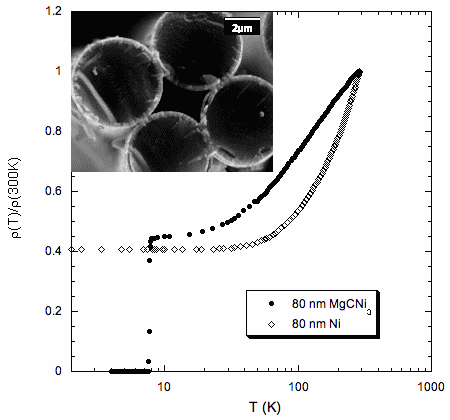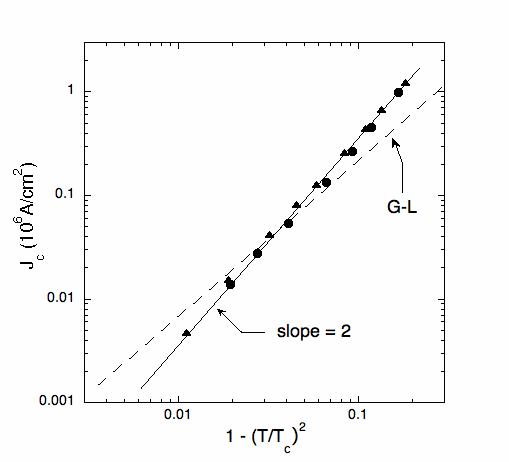
The only known superconducting non-oxide perovskite MgCNi3 has come under intense study since its discovery a few years ago. It is widely believed to be an important analog to the high-Tc perovskites by virtue of its chemical composition and its non-layered cubic structure. One would hope that MgCNi3 could, in fact, help disentangle the influences of crystal symmetry, chemical doping, and micro-morphology in its oxide cousins. We were able to form a MgCNi3 coating on 7 micron diameter C-fibers which allow us to probe the critical current behavior of this novel superconductor
On the left the normalized resistivity is plotted as a function of temperature for a carbon fiber coated with 80-nm of Ni and a similar Ni-coated carbon fiber processed in hot Mg vapor to form a 80-nm MgCNi3 sheath. Note the fiber that was exposed to Mg vapor superconducts.
Inset: Scanning electron micrograph of MgCNi3 coated carbon fibers showing a cross-sectional view.

On the left is a log-log plot of the scaling behavior of the critical current density near Tc in zero magnetic field for two fibers each with an 80 nm coating of MgCNi3. The solid line is provided as a guide to the eye and extropolates to a zero-temperature density Jc(0) = 4 x 10^7 A/cm^2. The dashed line has the Ginzburg-Landau slope of 3/2. The data clearly show that the critical current behavior does not follow expected Ginzburg-Landau scaling law.
We believe that the quadratic scaling shown in the plot may be reflective of an anomalous penetration depth behavior recently reported in polycrystalline powders. Whether or not the anomalous temperature dependence of the London penetration depth can be attributed to a non-conventional superconductivity in MgCNi3 remains controversial. But even if the superconducting state is conventional, the critical behavior of MgCNi3, as manifest through the critical current scaling, is not.
Read more: